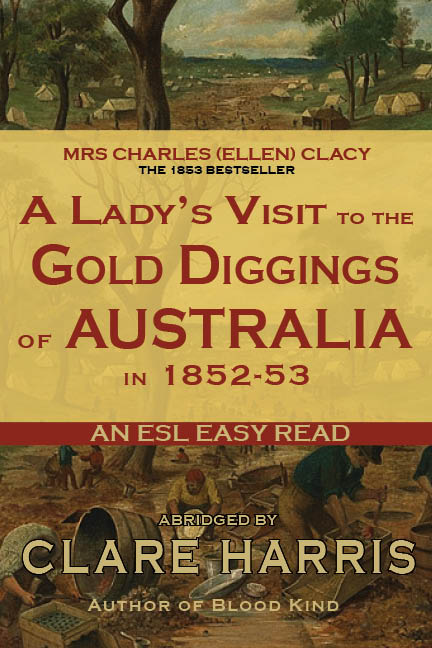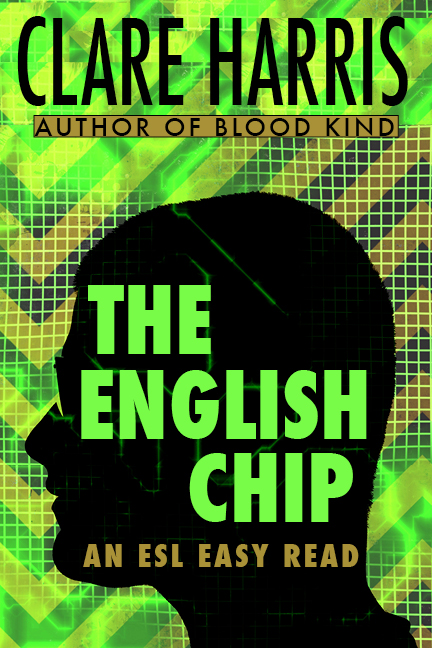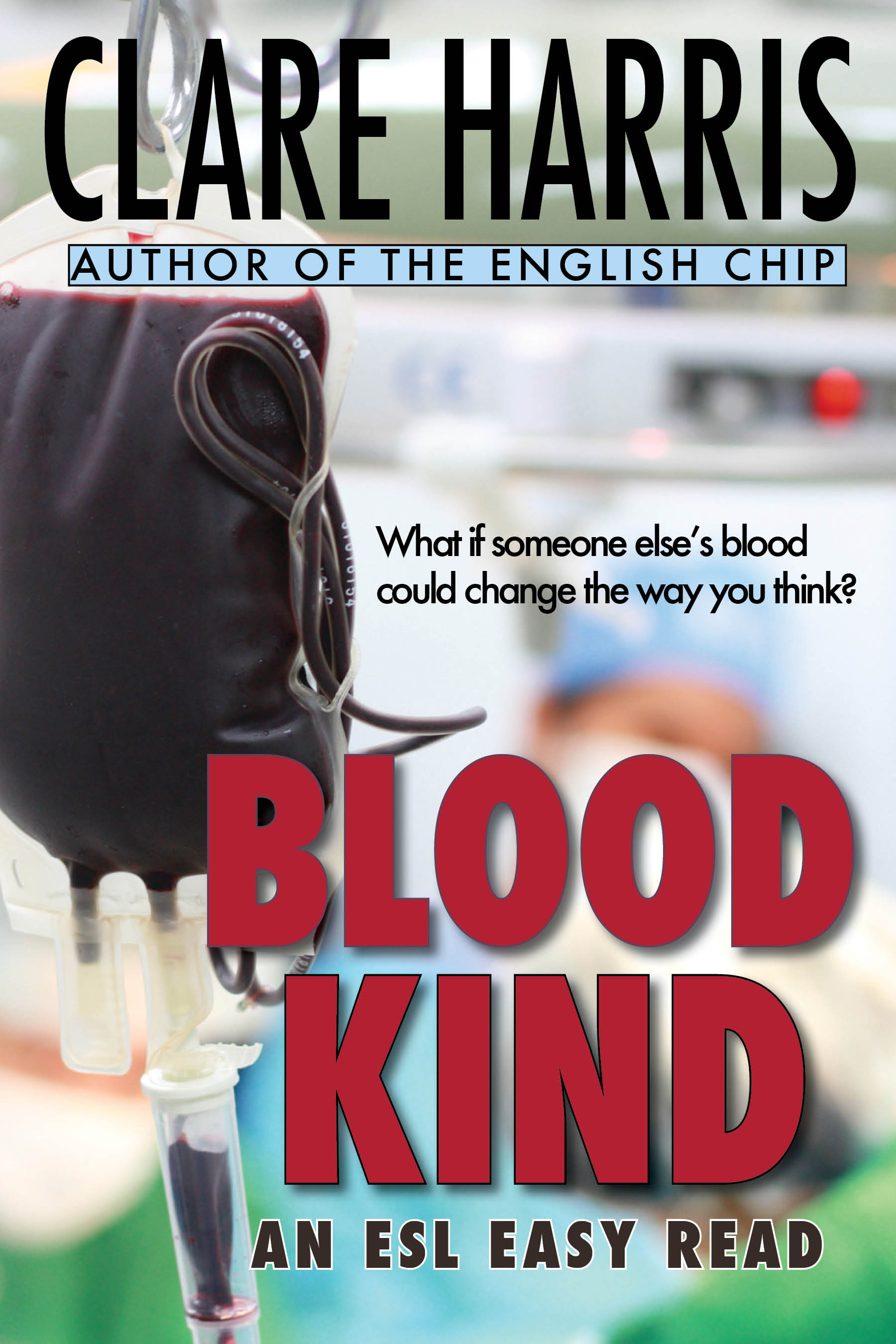Reviews
Here are extracts from reviews of ESL Extras: (I have left out bits that describe the exercises in detail, but have left in any ‘concerns’). Thanks so much to the reviewers!
FIne Print (VALBEC) journal (2019 – 1): Review by Lynne Matheson: Workwise English Puzzles
Doing puzzles is good for your brain. As someone who has done crossword puzzles for most of my adult life, I can vouch for that sense of satisfaction when the puzzle is completed, and all the clues are solved. At the same time, I like to know that some new words have been added to my personal word bank (etui is one new word I doubt I will ever use). I also admit being a Words with Friendsaddict – don’t get me started on some of the bizarre words that come up in the course of a game. Whether I am staving off the effects of ageing while sharpening my cognitive skills is a matter for the researchers to continue to puzzle over.
… The aim of Workwise English Puzzles is to provide engaging and fun activities as learners review the language of job-seeking and employment. Additionally there are opportunities to learn some new vocabulary and explore the kind of idiomatic language common to the workplace.
If you’d like to read the whole review, I’ve been given permission to include it above (at the top of this page)!
WATESOL (Western Australia) Newsletter (October 2018): Review by Eva Law-Davis: Workwise English Puzzles
Clare’s new publication ‘Workwise English Puzzles’ (with a job seeking/workplace focus) is an excellent resource for EALD teachers who are teaching VET programs in Foundations Year 11 or 12 or TAFE Flying Start programs. The book’s focus is on puzzles set in a pre- employment or workplace context with lots of work-related communication activities that are not too technical.
The diverse collection of puzzles covered in this great resource allows learners to begin talking about the language and the culture of the workplace in an enjoyable and highly accessible way through individual, small group and pair work activities. At the back of the book there is a data CD that has all the puzzle pages for easy printing or for projection onto a screen and an answer key for each activity.
Once again, Clare has produced a highly practical and accessible resource for the very busy and grateful EALD teaching fraternity.
TESOLANZ (Aotearoa New Zealand) Winter 2018: Review by Christine Dykstra: Workwise English Puzzles
…The book is easy to use, with a contents page and a teachers’ notes section which has some helpful suggestions on how to use the puzzles and provides extension activities. It also lists important concepts that these puzzles teach as well as workplace related language, such as reading instructions, crossing out words as they are used, and checking word length. The book is A4 sized and well presented with clear but minimal instructions on each page and some pictures. All the puzzle worksheets are photocopiable and the entire book is in black and white. It comes with a CD which has all the puzzles for easy printing or for projection onto a screen.
Learners will be stimulated by the great variety of puzzles in this book; other puzzle type resources I have come across are often limited in their range. Most of these puzzles lend themselves very well to pair or group work, giving the teacher opportunities to build in speaking and listening opportunities. The language presented in this resource is useful and suitable for the workplace language theme. It includes useful job-related vocabulary and phrases as well as small talk topics, everyday language and some numeracy. Being an Australian resource means that it is easily applicable to the New Zealand context, however, there are some terms which may differ (such as resume for CV and references to the Australian school/education system), but these are minimal.
I would recommend this resource to anyone teaching workplace related ESL courses, individual learners seeking work or getting established in a job, or as a resource for a library. It is great to have on hand for a topic-related and fun activity, as a lesson warmer, as a break from more intensive work, or as a filler activity.
TESOLANZ (Aotearoa New Zealand) April 2017, review by Stephen O’Connor: Maybe Next Year, Six Stories from Hope Street, Extra Easy Puzzles
The key to new migrants and refugees successfully settling into New Zealand is coming to grips with the English language. This series by Clare Harris is a very accessible introduction to antipodean culture and elementary English conveyed through the urban residents of Hope Street. The series comprises a reader with CD, and a teacher’s guide/workbook that contains the reader’s stories and pointers on how to apply them.
Maybe Next Year is a library reader pitched at the beginning ESOL learner. It contains eight different mini stories about a separate character from the street in everyday situations. It uses the simple present tense and introduces some very helpful language and customs in an engaging and appealing layout. Cleverly, the title of the book is the underlying theme running throughout each of the stories. The reader has an after reading prediction activity involving what they think might happen, as well as being given the opportunity to relate the story’s situation to themselves…
Accompanying the reader is a teacher’s guide and workbook that includes all of the stories as a photocopiable resource with the provision for students to write notes at the bottom of each page. … There is a board game at the end of the workbook which seems like a summative practice for the vocabulary learnt across the eight stories. Games like this are an excellent method to revise the language learnt. However, in order to challenge the students, I felt the sentence structures in the stories could have been appropriated here in order to extend the students. Harris does provide a lot of different ideas on how these resources can be used and so bearing this in mind, teachers could use this game more flexibly with their class.
Six Stories from Hope Street is the next level up, Beginner B, and focuses on the past tense. It introduces more characters who live on the street and the daily situations they are involved in. The workbook exercises are sequenced in a similar way to the first … so there is plenty of support material for in and out of class.
A practical resource is The Extra Easy Puzzles. This resource has an ample range of different word puzzles which can be photocopied and used as take home work or as communication pair work in the class. Again, Harris provides some useful ideas on how to appropriate the puzzles, giving succinct advice on using them with mixed-ability learners and students who struggle with their reading and spelling, based on her many years of experience teaching students at this level. All of the language used in the puzzles is appropriate for learners still coming to grips with the English language.
This series of books would be particularly helpful for adult learners new to an English speaking country. The books are well set out with relatable characters and stories that are effectively emphasised in the workbook’s activities; they would be an excellent learning resource.
QATESOL, 2017, review by Mary Tibben: Maybe Next Year
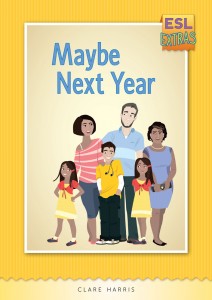 This is the first in a series of six progressive readers for adult English language learners. It comprises a small format reader and an audio CD, as well as an A4 teacher’s guide and workbook. The workbook contains the full text of the reader and a range of activities. All materials are fully photocopiable.
This is the first in a series of six progressive readers for adult English language learners. It comprises a small format reader and an audio CD, as well as an A4 teacher’s guide and workbook. The workbook contains the full text of the reader and a range of activities. All materials are fully photocopiable.
I have been using the material with my class of beginners, who are really enjoying working through it. They appreciate the simple, everyday language, which does not in any way talk down to them. They also relate well to the family whose lives are portrayed through the stories, which provide many opportunities for extended discussion. ‘Very nice book, teacher,’ they tell me regularly.
From the teacher’s perspective there are many features of the resource that I really value. I like the way that the story is broken into eight 3-page sections, each telling part of the story from the perspective of a different member of the family. This makes it very practical for a beginner class. We can read one section repeatedly over the course of a week or two, completing the activities as we go, and then move on to a different section, without the students being overwhelmed. I also appreciate the wide variety of activities provided in the workbook. These include not only simple questions about the story, but word-searches, spot-the-difference, oral activities, writing activities and more. I love the fact that everything is photocopiable – a real bonus!
The only concern I have with the resource is with the CD. While it is read with authentic intonation, and good Aussie accents, the pace is really too fast for beginners. Even after reading the text several times in class, the students find it difficult to follow the CD. A slower pace would make it more beginner-friendly. However, this is a minor gripe. Overall, I can thoroughly recommend these resources to anyone working with adults learning English. They are excellent value for money.
QATESOL, 2017, review by Su Murgatroyd: Six Stories from Hope Street
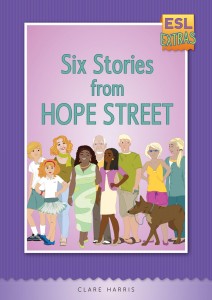 It’s not always easy to find good, age appropriate, Australian readers for lower level adult ESL learners. That’s why I was excited when I saw the Six Stories from Hope Street resources written by Clare Harris and published by The Book Next Door.
It’s not always easy to find good, age appropriate, Australian readers for lower level adult ESL learners. That’s why I was excited when I saw the Six Stories from Hope Street resources written by Clare Harris and published by The Book Next Door.
There’s a library reader with audio CD and a photocopiable teacher’s guide and workbook which has the full text of the reader, well-designed worksheets and fun activities (saving on preparation time), useful teacher/ tutor notes and an audio CD
The resources are aimed at beginner level adults and young adults. The stories are about familiar topics and are written in the simple past tense using everyday language.
I love that this book and four other books in the ESL Extras series (including a free book downloadable at https://www.thebooknextdoor.com/esl-book/free-book-my-job-is-the-best/) are all set in Hope Street. I can choose stories that align with the main focus of my lesson and my students are still in familiar reading territory.
I teach a small beginner class once a week and we now have a regular story time where we read, listen, learn new vocabulary and write our own stories using these resources.
TESOLANZ (New Zealand), August 2016, by Gwenna Finikin, ESOL teacher, Hokowhitu Primary School
“…as I did not have access to adult learners, I used my senior primary students who enjoyed helping me write this review.
My students with lower reading ability particularly enjoyed being able to listen to the stories and found them interesting and funny. They also enjoyed the activities they were given. The books and activities are well set out with black and white pictures. The workbooks are designed to be photocopied and are very clear. There is no 10% copyright rule and Harris encourages teachers to copy as much as needed for their learners. The CDs are there to be copied as well so learners can take them home with their booklets for on-going practice. The author gives ideas of different ways to use each book and ways of using them for different levels.
Welcome to Hope Street was designed to provide take-home material for preliminary learners. It has repeated text and structure providing plenty of picture scaffolding and introducing characters from later in the series. If a teacher were to work through it in one of the suggested ways, the book could span eight weeks of lessons and the learners would then have eight stories to take home as folded booklets, as well as the CD to listen to in their own time. Each story has four pages of associated work, including questions for teachers to ask, a cut-up picture/story match, and letter and word activities. There is also a vocabulary game at the end. My students enjoyed this book a lot, even though their reading level was beyond it.
The Garage Sale is a beginner level book written in simple past tense. It is fun to read. The book is split into six chapters. The workbook comes with four pages of activities per chapter. Harris has given many suggestions on how to use the workbook….The board game at the end of this book works on ‘this/that/these/those’. My students enjoyed the humour of the book and the twist in Chapter 6.
Can You Keep a Secret? is an elementary level book with more difficult sentence structure and vocabulary than the previous books. … Following the main idea would mean the lesson series would last eight weeks with a lot of opportunity to work on tenses, structure, and comprehension. This book contained more subtle humour that my students missed but adults would relate to. My students enjoyed the story, understood the worries of the protagonist and liked the twist at the end.
Harris has provided a teacher and learner friendly series of books for adults, using real-life situations and humour. She has spoken to other teachers about the types of resources they want and has produced a series that can be used in multiple ways and can be easily changed to work with different levels. They are designed to be supplements within formal or informal programmes. The books’ strengths lie in the stories as well as the numerous activities and the ability to multi-purpose the resources; teachers could work through the resources, or pick-and-choose, or come up with their own activities.
The one weakness of the series is that, as technologies develop, it is getting harder to find computers with disk drives to play and make copies of the CDs. It may be that Harris and her publishers need to look at providing downloadable MP3s so that those without drives can access and distribute the audio content. My students and I enjoyed looking through the resources and we will be using them in the future.”
WATESOL (Western Australia): April 2015 and ATESOL NSW: November 2015, by Samantha Vanderford, Independent ESL Consultant
Clare Harris (www.thebooknextdoor.com) has crafted two interesting and exciting short stories with a twist at the end for adult learners of English as a second language. The stories, both set in Australia, carry along at a fast pace with clear language and basic, perhaps universal, concepts.
The Coat is a story that moves along at break-neck speed with twists and interesting characters, which would appeal to both young and older adults. The Coat tells the story of a young woman who has moved to Melbourne to start her own business leaving her boyfriend in Brisbane. She needs a warm coat because of the cold weather and that coat leads her through questions of love and ethics. The language is at a pre-intermediate level and remains so throughout the book. The grammar is explicit in the text.
Can You Keep a Secret? is a story that would appeal to migrant adults, particularly those with families and jobs. The story centers on George a migrant who is up for a promotion at work but he is asked to keep it secret from his colleagues and family. This moral issue along with George’s concern that his English is not adequate for the job and a birthday party make for a highly entertaining sequence of events with a twist at the end. The language starts at an elementary level and progressively gets more difficult ending up at a pre intermediate level.
The language and the concepts in these two stories encourage the reader to read for meaning and not get bogged down in the language. It is understandable that the author has termed these readers “easy-read” stories and allocated them to the elementary/ pre-intermediate level (CSWE 1,2,3 depending on the level of support provided by the teacher)…
Certainly, one could get picky and say that there are some minor problems with the worksheets (e.g., multiple choice word quiz choices are more complex than the question in some instances). However, the positives of the worksheets outweigh the negatives. For example, the extra language rules for the past tense, similes, collocations, half and half sentences, tables and categorization exercises teach the students excellent learning strategies for analyzing language. Further, the answers are provided.
In summary, if you want to find books for your students that they will read with interest through to the end and go on to read others after, these books are a great choice. With this excellent set of materials, Clare Harris, the author, has certainly achieved her five goals for students, which are 1) reading for enjoyment, 2) fluency and pronunciation development, 3) vocabulary and idiom learning, 4) confidence with narratives and recounts, and 5) achievable comprehension review.
A link to a Blogger’s Review from Amanda Kendle (and disclaimer, I know her!)




